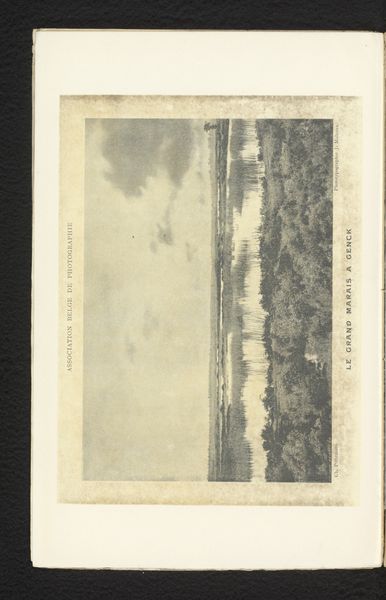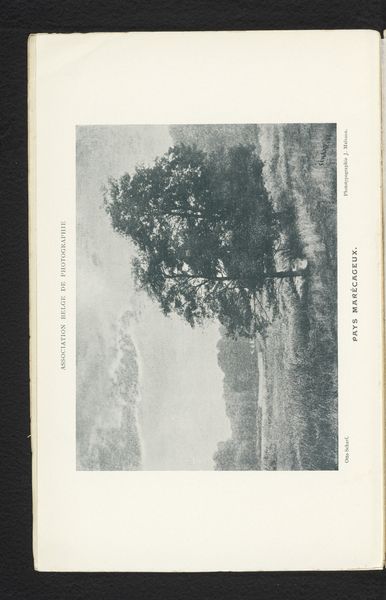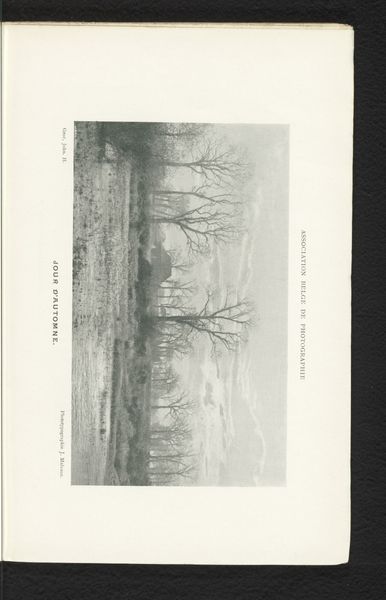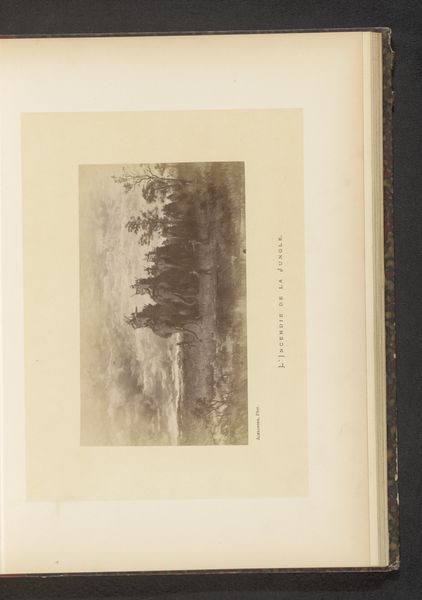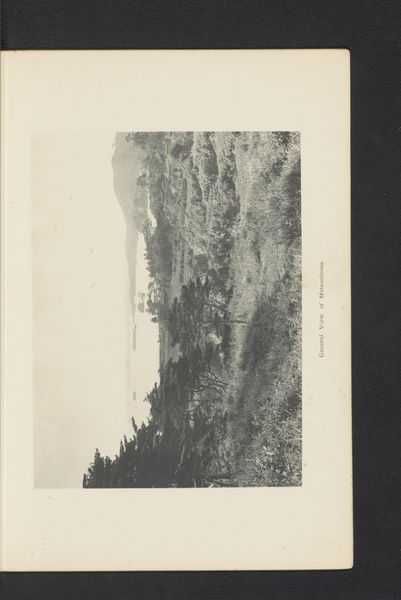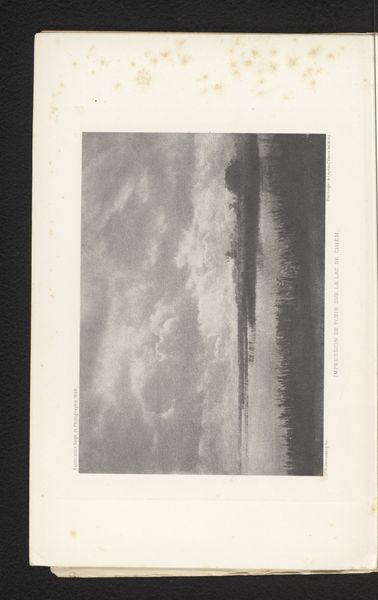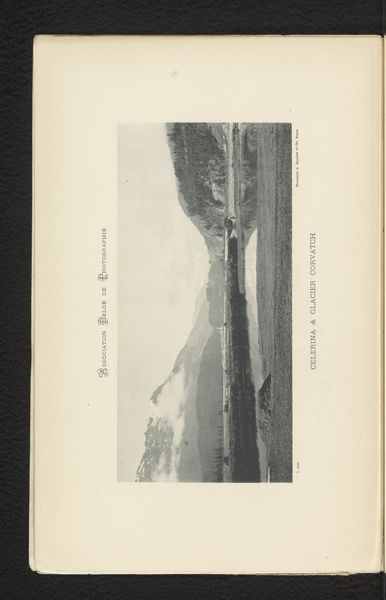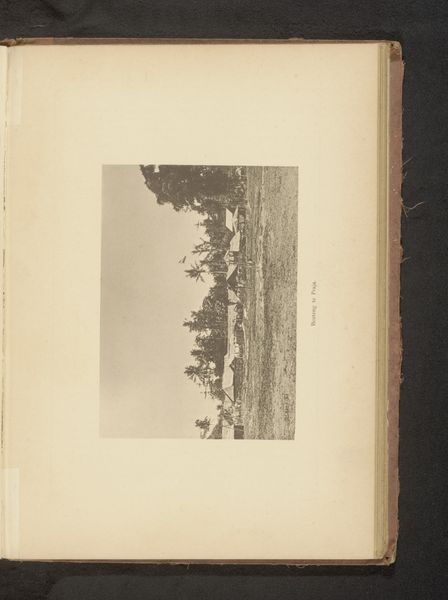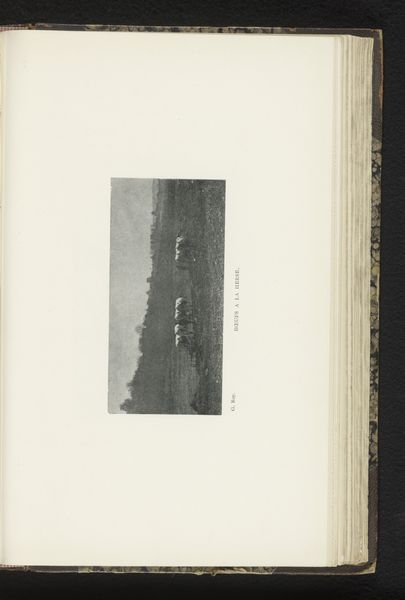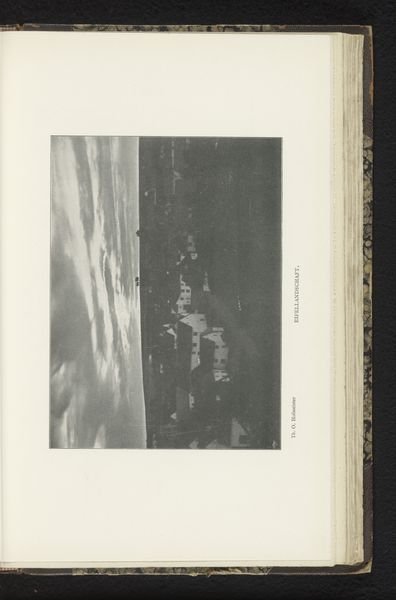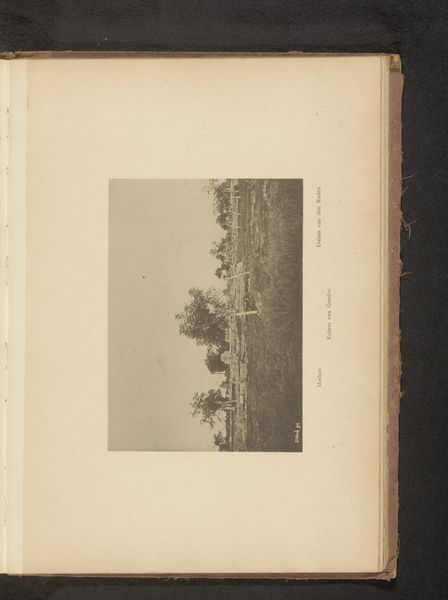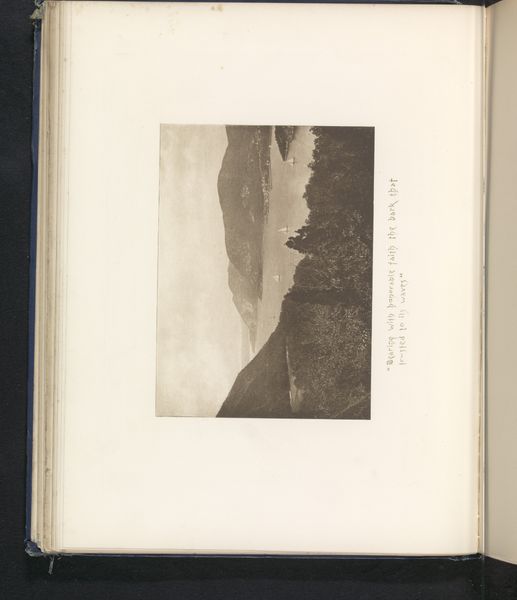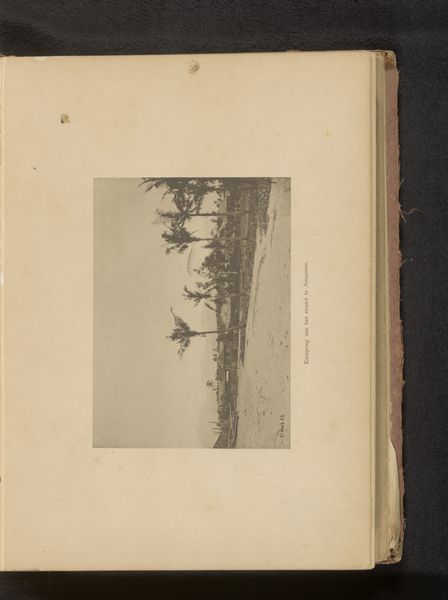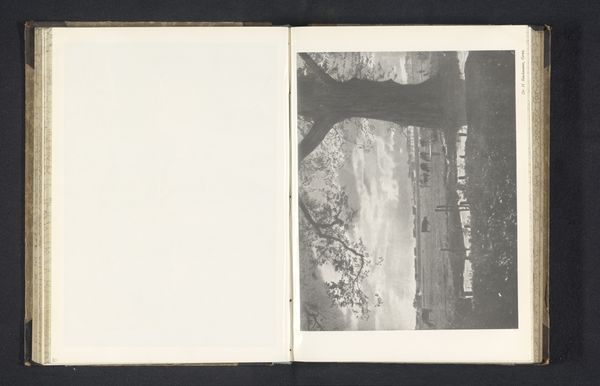
#
paperlike
#
personal journal design
#
printed format
#
book mockup
#
magazine mockup
#
folded paper
#
publication mockup
#
paper medium
#
thick lined
#
publication design
Dimensions: height 120 mm, width 170 mm
Copyright: Rijks Museum: Open Domain
Editor: This photograph, “Landschap met waterpartij,” which translates to “Landscape with waterscape,” is attributed to C. Barrow Keene and was made before 1899. It is part of a publication it seems. The tones are very soft and it has an overall quiet mood. I'm struck by the composition; how the water reflects the opposite bank. How do you interpret this image in the context of its time? Curator: Given its apparent existence within a Belgian photography publication, and the information "Association Belge de Photographie" printed beside the work, the context becomes significant. It speaks to the institutionalisation of photography as art, a debated topic at the close of the 19th century. We can explore questions like: What role did photography associations play in promoting photographic art? Was Keene a member? And how did these associations curate their publications and shape photographic trends and aesthetics? Does the traditional subject of "landscape" serve the photographer and institution in advancing claims about the artistic merits of photography at the time? Editor: So you are saying that this image would be interesting to interpret through its social and cultural context. The traditional subject helps photography enter into a world primarily defined by painting? Curator: Precisely. Examining the Association's aims, the other featured photographers, and the critical reception of their publications offers insight. Do they embrace the painterly style then common, or strive for photographic realism? Keene’s landscape likely played a part in that conversation, furthering photography’s legitimacy in the public sphere. We can see such photographic and painterly dialogues even today. Editor: I see; understanding the social forces that shape an image provides a different angle to thinking about art! I didn't realize it could be that complex. Thanks! Curator: Indeed. And hopefully such understanding helps to reveal the ongoing legacy of those images.
Comments
No comments
Be the first to comment and join the conversation on the ultimate creative platform.
